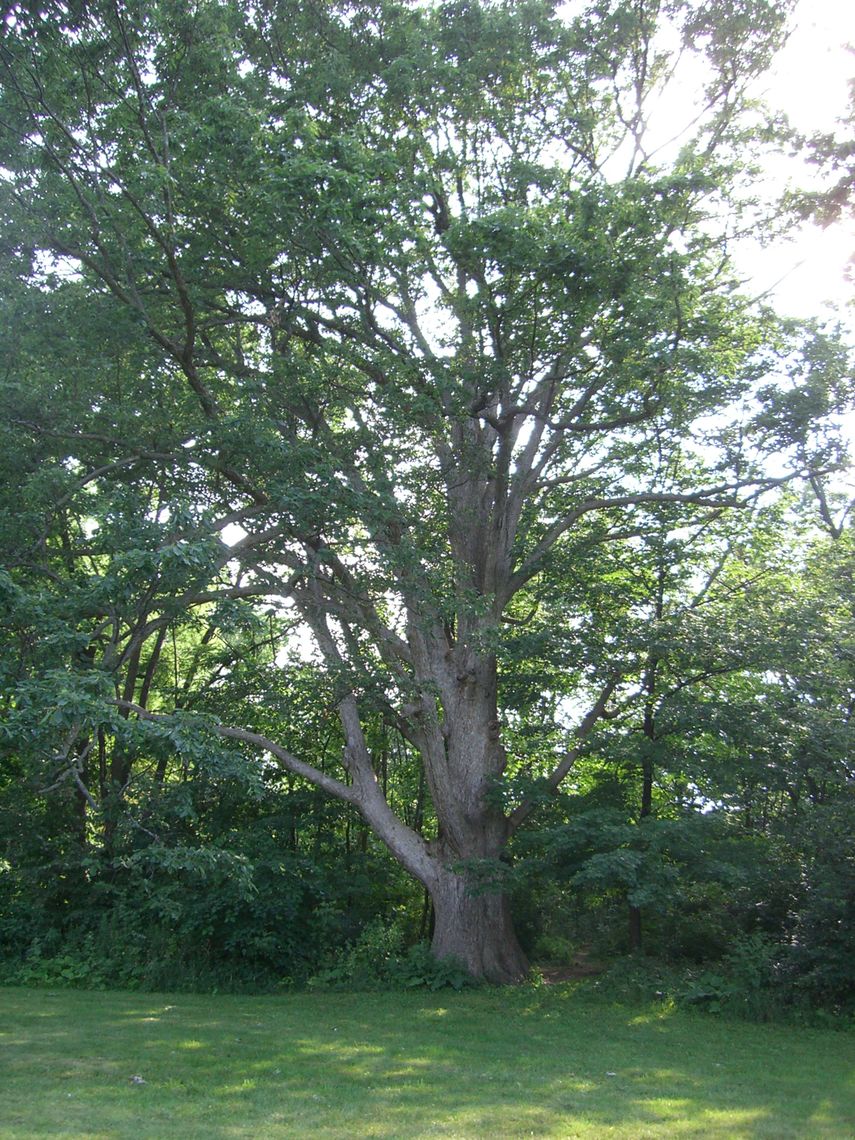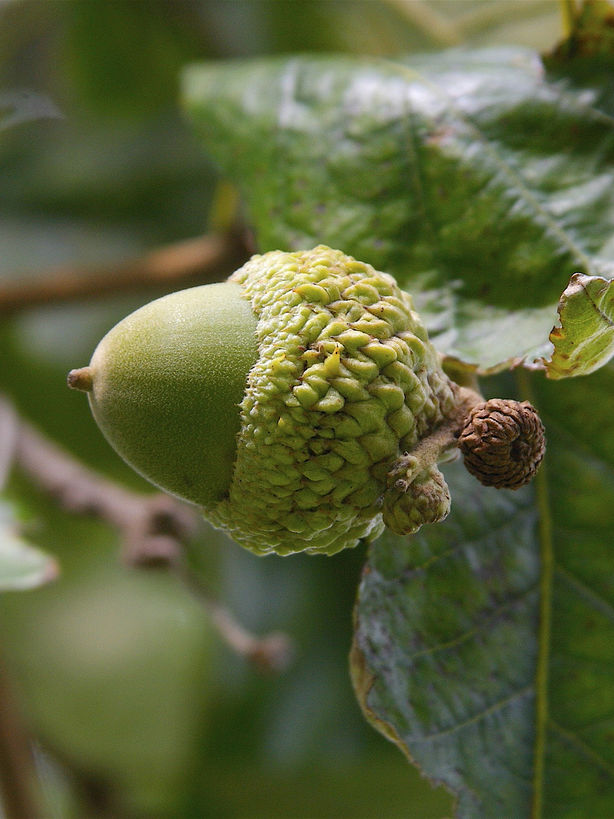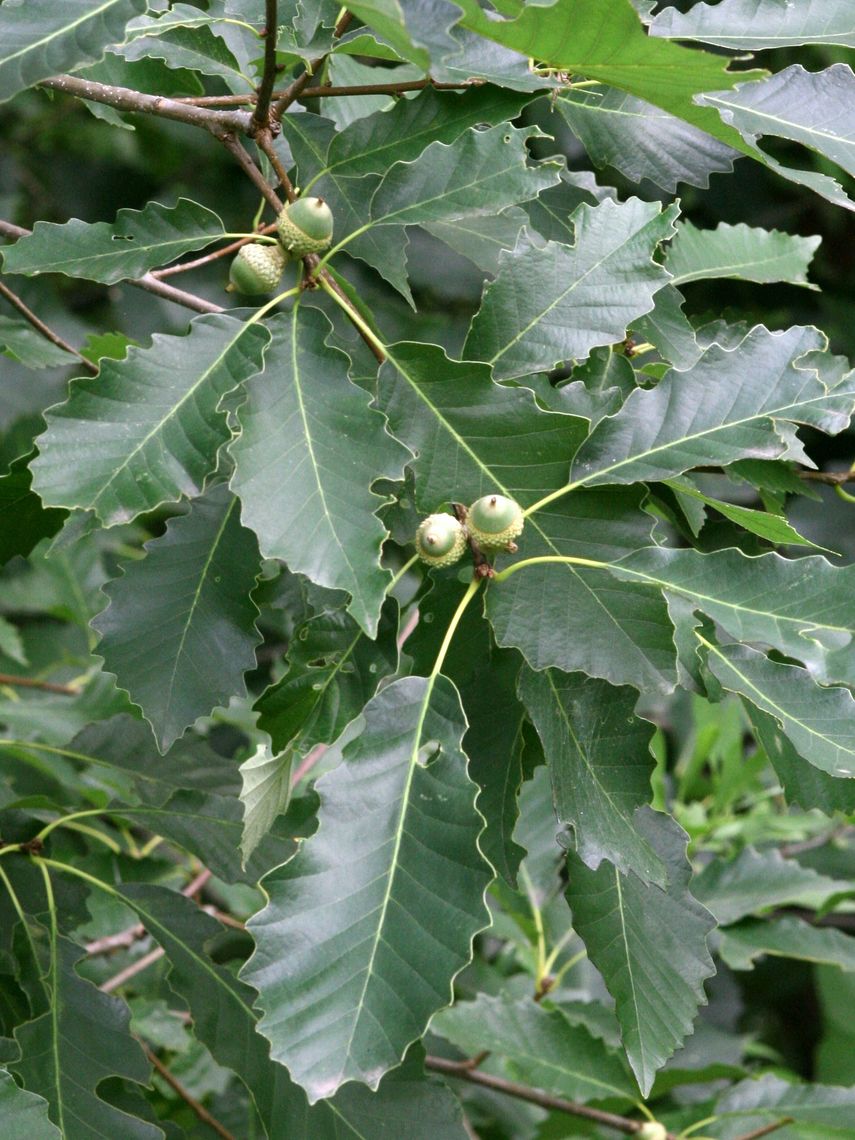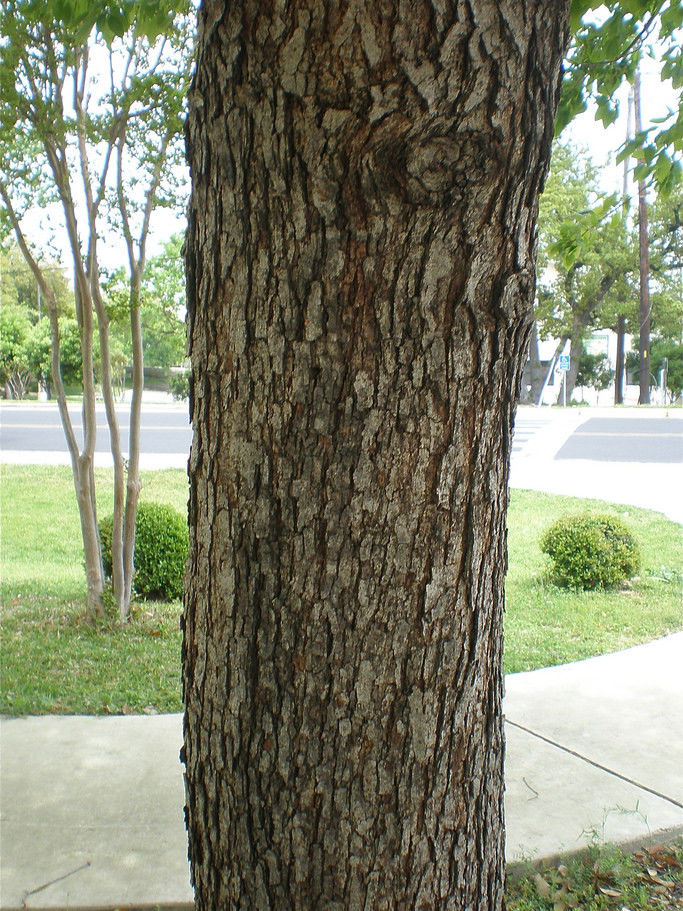Chinkapin Oak (Quercus muehlenbergii)
The Chinkapin oak, sometimes referred to as a Muhlenberg oak, has coarsely toothed, glossy green leaves, that usually turn yellow in the fall. These leaves somewhat resemble those of a chestnut. The tree's sweet and edible acorns also resemble those of the chestnut. It is due to these similarities that the Chinkapin oak gets its common name, since chestnuts are sometimes also called chinquapins. This tree attracts birds and mammals.
Family: Fagaceae (Beech)
Characteristics: The 4-inch to 6-inch-long leaves are narrow, coarsely toothed, glossy, and dark green. In the fall, leaves turn yellow to orange-yellow. This tree produces insignificant yellow-green flowers that appear as catkins. Acorns are a ½ inch long and are half-way covered by a thin and scaly cap. Bark is ash-gray with scaly ridges. Young trees have a pyramidal to oval shape. With age, the tree becomes more open and rounded. It grows 40-50 feet high and wide, though it can reach 70-80 feet in the wild.
Foliage: Deciduous (leaves lost seasonally)
Geographic Origin: Eastern United States (native)
Cultivation Notes: Requires low maintenance. Does best in full sun. Prefers alkaline, moist, and well-drained soils. It has a good drought tolerance. This tree may be difficult to transplant. It may take up to 30 years for it to begin producing acorns.
Number on Campus: 3
Sources: Dirr, Morton Arboretum, Missouri Botanical Garden




